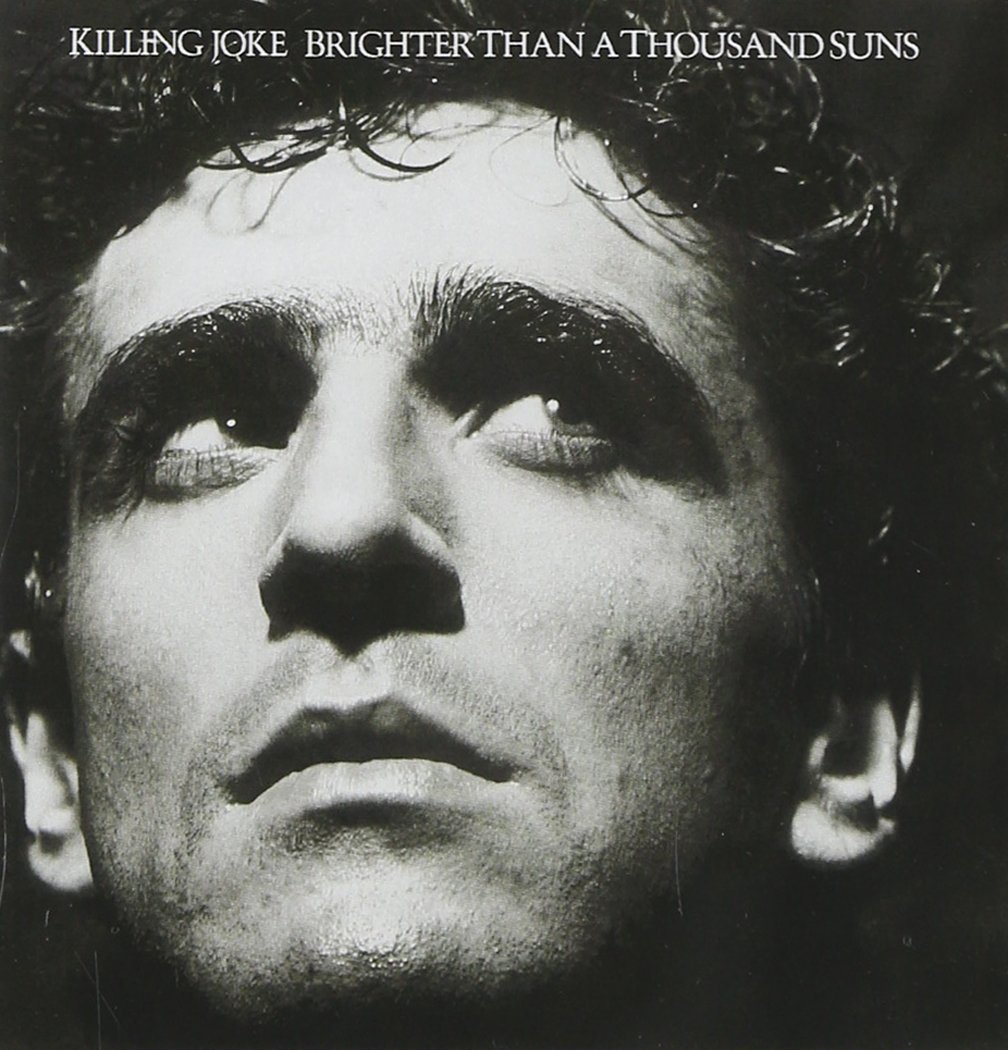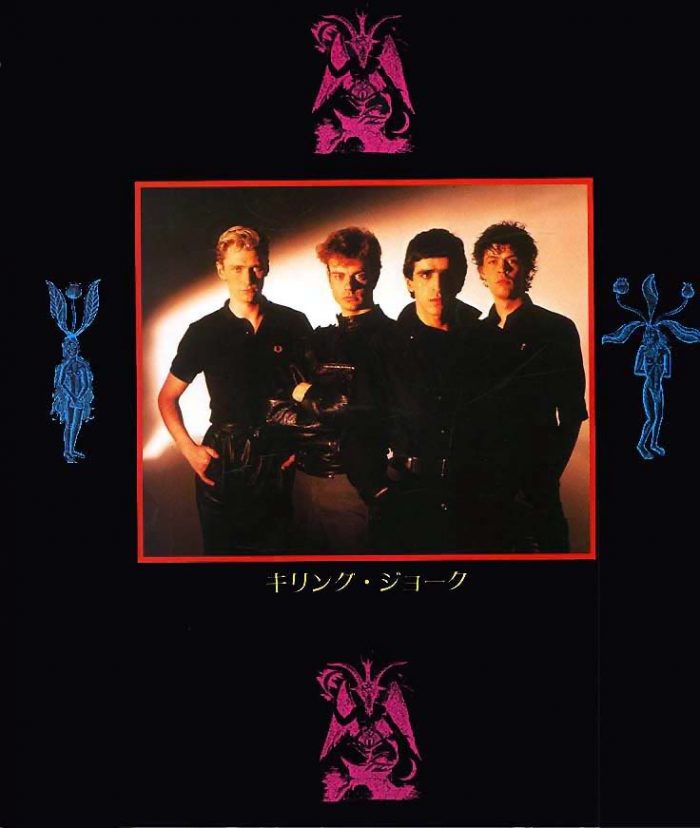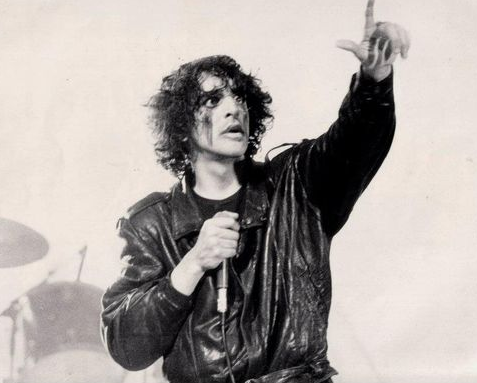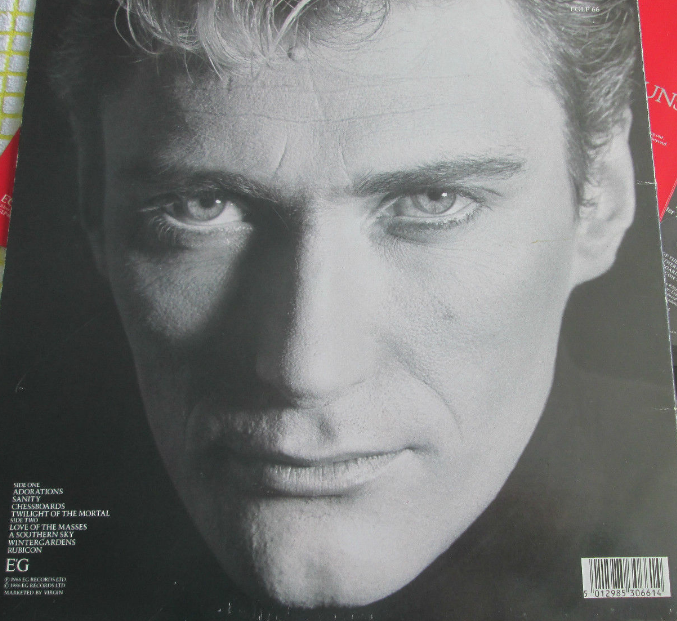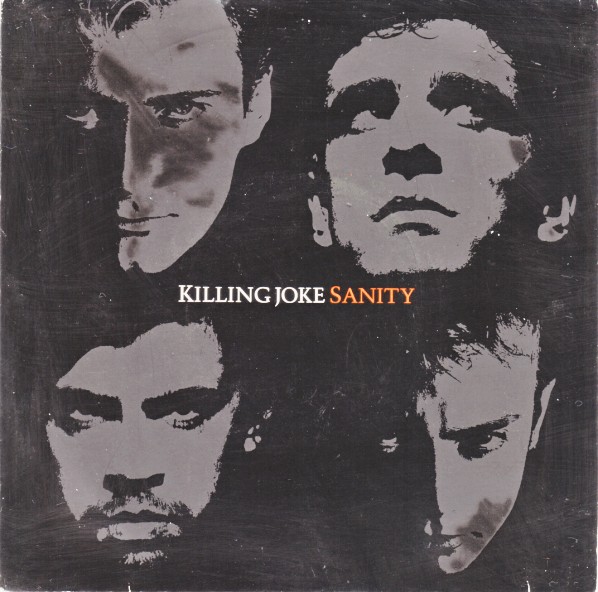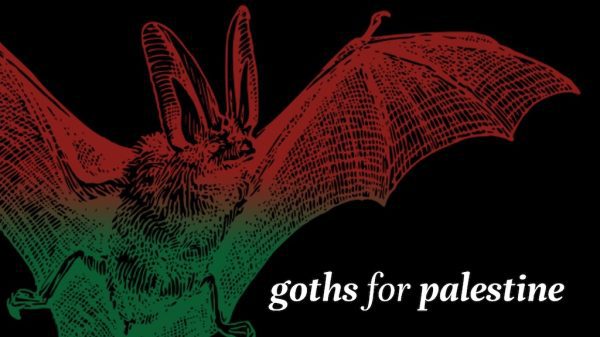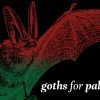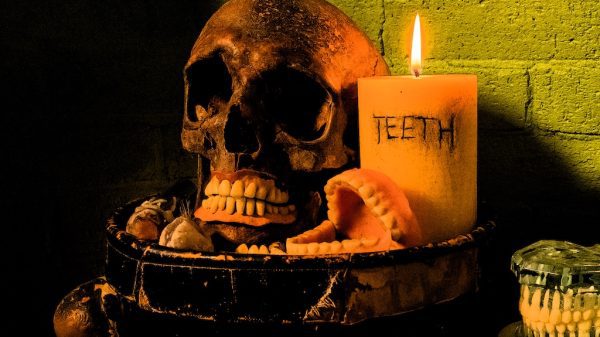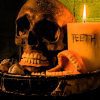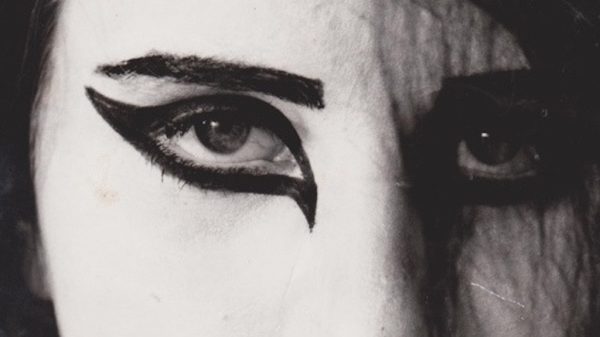“If the radiance of a thousand suns
Were to burst at once into the sky
That would be like the splendor of the Mighty One […]
I am become Death,
The shatterer of worlds.”
– Robert J. Oppenheimer, Los Alamos, New Mexico, July 16, 1945, quoting the Bhagavat Gita after witnessing the detonation of the first atomic bomb
“Deserts are paradise, awake to genocides –
Delight and suffering, these roles that we have found;
Nourished by food we eat, hungered by the waste we excrete –
From apes or sons of god, let every act be sacred.”
– Killing Joke, “Adorations,” Brighter Than a Thousand Suns
In 2016, it’s hard to imagine just how divisive Killing Joke‘s darkly magnificent opus, Brighter Than a Thousand Suns, was when it was released thirty years ago. On the thirtieth anniversary of its release, it’s time for a reappraisal and reassesment of this landmark album.
With the benefit of hindsight, it seems fitting to say that in 2016 Brighter Than a Thousand Suns has come into its own as one of the era’s consummate syntheses of 80s darkwave music – a kind of crystallization of all that was dark and dancey in the gothic, postpunk, and New Romantic music movements of the original postpunk era, even if the band arrived at this sonic crossroads in a less-than-ideal way (Commercial pressures, label meddling, and more, detailed below).
BTATS was a more self-consciously … some would say slick … LP than Killing Joke’s stuff up ’til then. Although the album was a new turn for Killing Joke, its title – which refers to nuclear apocalypse – showcased the constant chiliastic obsessions of the band (and especially its singer, Jaz Coleman). The story of Brighter Than a Thousand Suns is a fascinating tale of how one of England’s original-era postpunk bands came to define the sound of darkwave and postpunk music for decades to come.
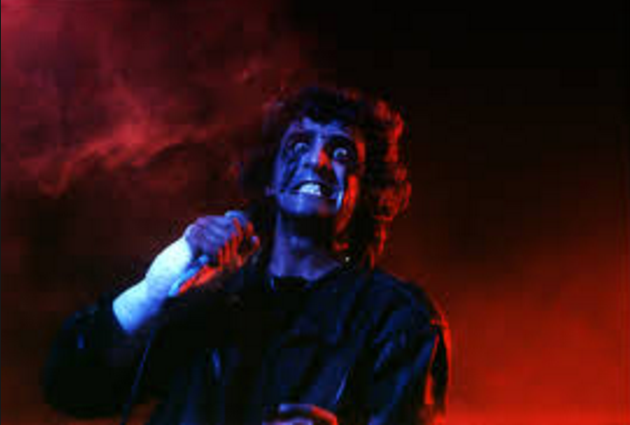
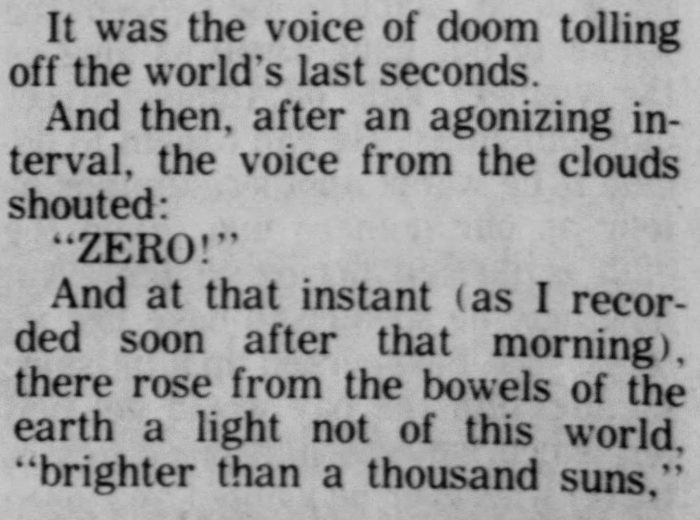
“Whenever Killing Joke starts making new music,” Jaz Coleman told me in my interview with him in 2012, “we don’t plan it out too much. We don’t know how it’s going to sound in the end; we just get together and start playing, and however it turns out is how it turns out. We don’t go in thinking ‘Let’s do this kind of record.’ It just happens when we get together, and it ends up different each time we do it.”
If the band had started on a path influenced by jagged and angular PiL-esque and Krautrock punkiness (which they did) in 1979, by 1986 they were immersed wholly in a midnight world of shadowy darkwave European gothic sensibility. Listening to BTATS, it’s hard to imagine it is the same band that was splitting open skulls with songs like “The Wait” or pummeling eardrums with fiery tracks like “We Have Joy.”
[youtube id=”qV-cYH8udSk”]
In short, Brighter Than a Thousand Suns was qualitatively different than Killing Joke’s earlier, harder-edged material: the band’s 1980 self-titled debut LP evinced everything from crossover punk-metal (“The Wait”), to raw postpunk (“Complications”), to proto-gothic rock (“Requiem”), to industrial music (“S036”). By their sixth LP – that is, BTATS – Killing Joke were a well-traveled veteran band of the punk, postpunk, goth, new wave, and dark music scenes and alternative festival circuit – and, thanks largely to eccentric figurehead Jaz Coleman, they had also traveled a strange and apocalyptic path towards a more atmospheric and synth-heavy brand of doominess, much in evidence on BTATS.
In 1986, BTATS was divisive even among Killing Joke’s longtime fans; many viewed it as a sellout record, a craven caving in to the chart success of the previous year’s breakthrough goth-pop “Love Like Blood” single. In fact, the spectre of “Love Like Blood” looms large over Brighter Than a Thousand Suns. “Love Like Blood,” released on 1985’s Nighttime LP, as well as a standalone twelve-inch, was a Top 20 hit in the UK. It charted internationally, too. It sold a ton of copies.
Killing Joke’s label wanted more of the same, and the band themselves enjoyed the taste of commercial success that had finally come their way after slogging away as merely a cult favorite, underground act. “Love Like Blood” was inspired by the Yukio Mishima novel Spring Snow – Mishima has been a literary source of inspiration for other dark postpunk bands as diverse as Death in June and Dead Can Dance – and the militaristic video for “Love Like Blood” remains Killing Joke’s best video outing (Interestingly, Chris Kimsey produced the “Love Like Blood” single, but his version of BTATS was cast aside in favor of Julian Mendelsohn’s mix).
BTATS was divisive among critics, too, whose reviews of the album at the time viewed it as a lackluster and halfhearted attempt at moody New Romantic pop pap; it was “an effort ultimately dialed in rather than performed,” AllMusic’s Ned Raggett said (and many Killing Joke fans, especially the older ones that had been with the band since their hard-edged debut LP, still agree with this assessment). Richard Cook of Sounds gave it a 3 out of 5. Even the usually-wrong Mark Prindle wrote: “Oh sure, they sound like Duran Duran [on this LP], but open your soul, main, open your soul. Even though this would be a rotten first Joke purchase for any young rocker, if you’re already a fan, you should pick it up for sure.”
Actually, Brighter Than a Thousand Suns doesn’t sound so much like Duran Duran at all, as much as, well, Killing Joke.
[youtube id=”71b7c43iMqo”]
BTATS was divisive even within the band itself. Two versions were (in effect) produced by two radically different engineers. The album was originally produced by Chris Kimsey, who had produced (or had helped produce) the ROLLING STONES’ hard rocking 70s Some Girls and Sticky Fingers releases. This version of BTATS was punchy, but still showed Killing Joke further down the road on their darkwave trajectory. Dissatisfied with how uncommercial it sounded, label EG brought in Julian Mendelsohn to mix the LP. Mendelsohn was experiencing radio success in the 1980s with bands like PET SHOP BOYS and INXS, and Mendelsohn’s reworking of Kimsey’s production brought a languorous 80s dance aesthetic to bear on Killing Joke’s material. Mendelsohn’s was the version of BTATS that EG hoped would land the album in the Top 40 charts. That didn’t happen.
It wasn’t until 2007 that the original, Chris Kimsey version of the LP saw the light of day. Before 2007, the Chris Kimsey version of BTATS existed only among bootleggers or on file sharing networks, labeled as the “Chris Kimsey restored mixes” version. In 1986, though, Killing Joke’s label, E.G., chose to release the airier, new wave-ier Mendelsohn version of Brighter Than a Thousand Suns instead of the more viscerally powerful Kimsey version.
BTATS was divisive within the band in another way: the band broke up within a year of its coming out. BTATS appeared to be Killing Joke’s swan song.
Yes, in 1987-1988 Jaz Coleman recorded a solo album that later involved Killing Joke guitarist Geordie, and this constituted the terrible LP that was Outside the Gate, which was belatedly and disingenuously labeled “a Killing Joke album.” But 1986’s BTATS was the last proper Killing Joke LP until the return-to-form LP that was 1990’s Extremities, Dirt, and Various Repressed Emotions. Between 1980 and 1986 Killing Joke had released about one LP per year. After Brighter Than a Thousand Suns in 1986, the band imploded and wouldn’t come back until the 90s began.
[youtube id=”SWG6toY9vFw”]
1986 was in many ways a very transformative year for dark underground music in general, though; SAMHAIN’s November-Coming-Fire came out in February of that year, and to many it evinced an influence from Killing Joke’s earlier material (see especially Samhain’s title track, “November’s Fire”). THE DAMNED followed up their goth-pop odyssey Phantasmagoria with Anything; and many other punk bands were experimenting with more introspective or more experimentally postpunk sounds. GOVERNMENT ISSUE were working on their Damned-influenced You LP. In the hardcore punk scene, a lot of bands were trying out metal, and were in the process of becoming either all-out metal bands (as in the case with SSD) or they were trying to meld punk and hardcore into a kind of hybrid, which would become known as “crossover” (LEEWAY, CRYPTIC SLAUGHTER). In the UK, Batcave bands like ALIEN SEX FIEND were trying out dancier, more electronic tunes. Killing Joke’s gothy success with “Love Like Blood” in 1985 and the rise of bands like DEPECHE MODE and PET SHOP BOYS perhaps convinced Killing Joke that they needed to take a more atmospheric – a more heavily-produced – turn, as well.
By the same token, in the mid-1980s newer bands like Germany’s PINK TURNS BLUE were in the process of creating what would later be called “darkwave” – an exploration of the darker musical spaces that postpunk had opened up, taking the initial postpunk reaction to punk in a gloomier direction than even the early experimentalism of JOY DIVISION and SIOUXSIE AND THE BANSHEES had contemplated. The era of gothic rock was nigh, and 1987 would see the SISTERS OF MERCY produce their penultimate Floodland LP, with whom Brighter Than a Thousand Suns is a kind of sonic kin. It’s in this context of the 80s coldwave, goth, and darkwave movement that Killing Joke’s LP should best be understood, even if the band themselves were not consciously making an LP in this vein. In the mid-80s there was something in the water.
The cover of BTATS was an extreme close up of Jaz Coleman’s face. The back of the 12″ LP slipcase was a similar closeup of guitarist Geordie’s face. And indeed these two members have been the sole constant members of Killing Joke throughout the years. But the lineup of BTATS still included the formidable talents of founding member and drummer Big Paul Ferguson and bassist Paul Raven (check out his interesting, mutant postpunk-funk bass lines on “Love of the Masses” on this LP). These members’ contributions were buried amid an ethereal wash of Jaz’s blissed out synths on the Mendelsohn version of the album. In the Kimsey mix of the LP you can much better hear the churning gut-punch of Geordie’s guitar, especially on “Chessboards,” and Raven’s bass is discernible – something that can’t be said for Mendelsohn’s versions of the songs.
Jaz Coleman’s chops as a singer have often been underrated. He can switch from a posh, New Romantic/postpunk style of singing to a Lemmy-esque dinosaur roar at the drop of a hat; I don’t know of many others than can do that, or who have a backing band that provide them with an opportunity to explore this sort of war-and-peace vocal dynamic. On BTATS it’s all ethereal crooning from Jaz: he’s actually singing. This is no more apparent than on the genuinely beautiful track “A Southern Sky,” one of my personal favorite Killing Joke songs. (Ah, to hear that one live!) The lyrics are poetry:
Bright are the scented flowers, many shades of green;
Water from the purest spring – man is finding wealth
Down by the clearing in glades of fern and palm
Invocations rising from servants of the Star
And walk with the breeze, the waves, the earth
As we move in unison
[youtube id=”ff31KOrSzAc”]
But BTATS isn’t all flowers-and-poetry. Like every other Killing Joke LP, it’s at its base an apocalyptic album. The millenarian reference in the title of “Brighter Than a Thousand Suns” served to remind listeners of Killing Joke’s thematic provenance: since their earliest days, according to Jaz, Killing Joke had been founded on occult, ritual magick, and they had foreseen the imminent end of the world. They were, they said, the musicians for its soundtrack.
Killing Joke’s third LP, Revelations, underlined this; it was a collection of dark postpunk nursery rhymes and fairy tales about the looming apocalypse (“There was a rhyme that wasn’t a rhyme / In a time that wasn’t a time / There was a place that wasn’t a place / There was a race that wasn’t a race”). Revelations was produced by Conny Plank of Krautrock fame, recorded in Germany, at a time when there was an East and West Germany, and when the Cold War threatened to turn hot, when all eyes were on the Fulda Gap, when NATO and the Warsaw Pact might eliminate themselves in an atomic, mutually assured destruction that would dovetail with the most nightmarish prophecies from the world’s major religions (In fact, in 1983 all-out nuclear between NATO and the Warsaw Pact almost did happen, it has come to light).
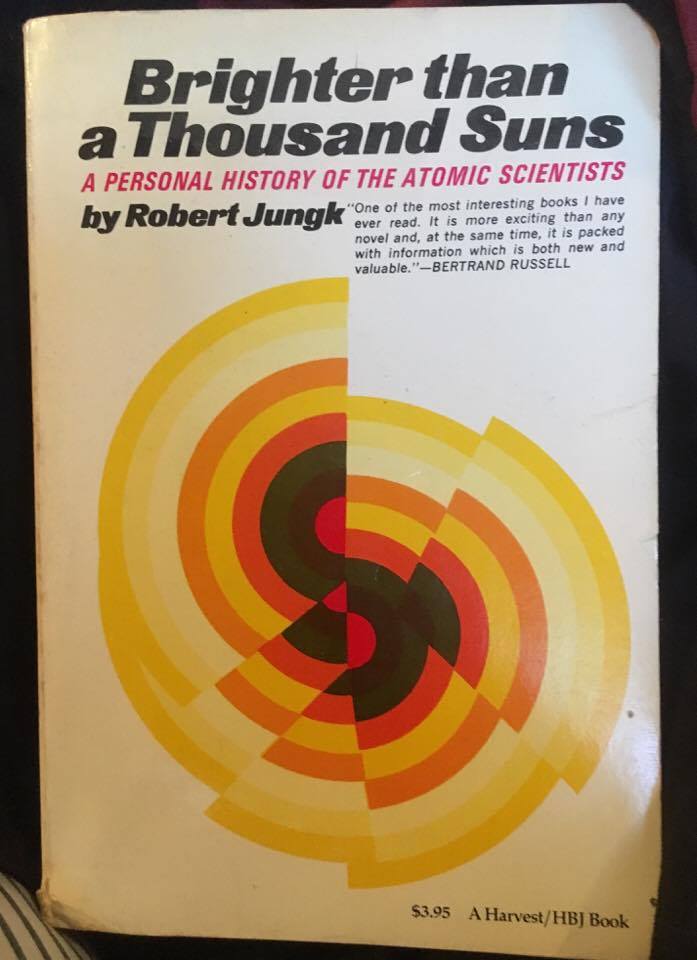
After Revelations came out, Jaz Coleman escaped to Iceland to sit out Armageddon (His loyal guitarist, Geordie, joined him). Armageddon didn’t happen, and Jaz came back to England to re-form Killing Joke in 1983 to make that year’s well-received Fire Dances LP, an album about the aftermath of mankind’s collective holocaust. This was the era of “The Day After” on US TV and the nightmarish Threads on UK TV. Three years later, Brighter Than a Thousand Suns was issued, furthering Killing Joke’s longstanding end-of-times motif.
The first single from BTATS was its first song, “Adorations.” It peaked at #42 in the UK and failed to chart in the US. Kerrang! described “Adorations” as “a brilliant, uplifting slice of swooning synth romanticism, with Jaz Coleman in full croon. A guilty KJ pleasure if there ever was one.” The second single was “Sanity,” a similarly gothic nightclub number. It fared less well, and only reached #70 in the UK. After “Sanity” came out, drummer Paul Ferguson, and then bassist Paul Raven, left the band. Displeased with the music direction of the band, they wouldn’t return to the fold until the 2000s. All in all, Brighter Than a Thousand Suns peaked at #54 on the UK charts, and at a disappointing #194 in the US.
The closest thing there is to a title track on the album, “Rubicon,” appeared as the last song on the original vinyl and cassette versions:
Let rage and hate of races run from Adam down
The magic of our science shines brighter than a thousand suns
Liberty in new dimensions ruthless and spectacular
Obliteration shall be the poetry of Golden Dawns
[youtube id=”kfhBUnG_OQw”]
[youtube id=”v5MftVtnU_k”]
A full confession about my attitude towards Brighter Than a Thousand Suns is in order. I used to really dislike this album. And as fraught with memories of conflict as it was, so did most of the band. To this day, they never play songs off BTATS in their live shows. My favorite Killing Joke LP is still their first, self-titled album because of both its raw power and its outside-the-box thinking in its approach to punk and postpunk. For the longest time, I viewed BTATS the way the band seems to – as a kind of side track and an embarrassment, too refined and over-produced to represent the true raw power of the Joke.
Over the years, however, thanks to imitators, to those who’ve claimed to be influenced by this LP, and because history has a strange way of clearing things out in the wash, I’ve come to see that BTATS really is an important landmark. It’s a steely, Gothic cathedral of an LP that was a fitting fleshing-out of one aspect of Killing Joke’s genius. If Killing Joke had never made BTATS, many would wish they had made an LP like this. The album is taken for granted now, and the absence of BTATS from the KJ back catalog at this point would seem jarring. In fact, there are some songs on Killing Joke’s 2012 MMXII that seem to harken back to BTATS, though the band would probably never admit it (MMXII’s “Primobile” seems to owe a lot to what Killing Joke were going for on BTATS). There are a lot of fans that hope Killing Joke return to the style and engage in further sonic explorations along the lines charted in BTATS.
On BTATS, Jaz’s lyrics are as thoughtful as they ever were. There is some brilliant stuff there. Geordie played some incredibly good guitar riffs that finally could be appreciated in the 2008 Kimsey version of the LP; “Chessboards” recalls the Killing Joke of 1980-1982. And there’s something to be said for the band finally making an all-out moody and captivating ethereal LP like this. Not many could do it, or have done it, the way that Killing Joke did.
Enjoy the entirety of the LP here:
[youtube id=”U28IU_iFR1k”]
An interview with Jaz Coleman on the cusp of Brighter Than a Thousand Suns:
[youtube id=”WUjjnVWJC3E”]
Jaz, Geordie, and Paul Raven give an interview in Germany about whether or not 1985’s Night Time was a commercial album:
[youtube id=”POuyvXehBAk”]
Jaz and Geordie give an interview after Brighter Than a Thousand Suns to MTV Europe:
[youtube id=”ukAWRDrIQFQ”]


